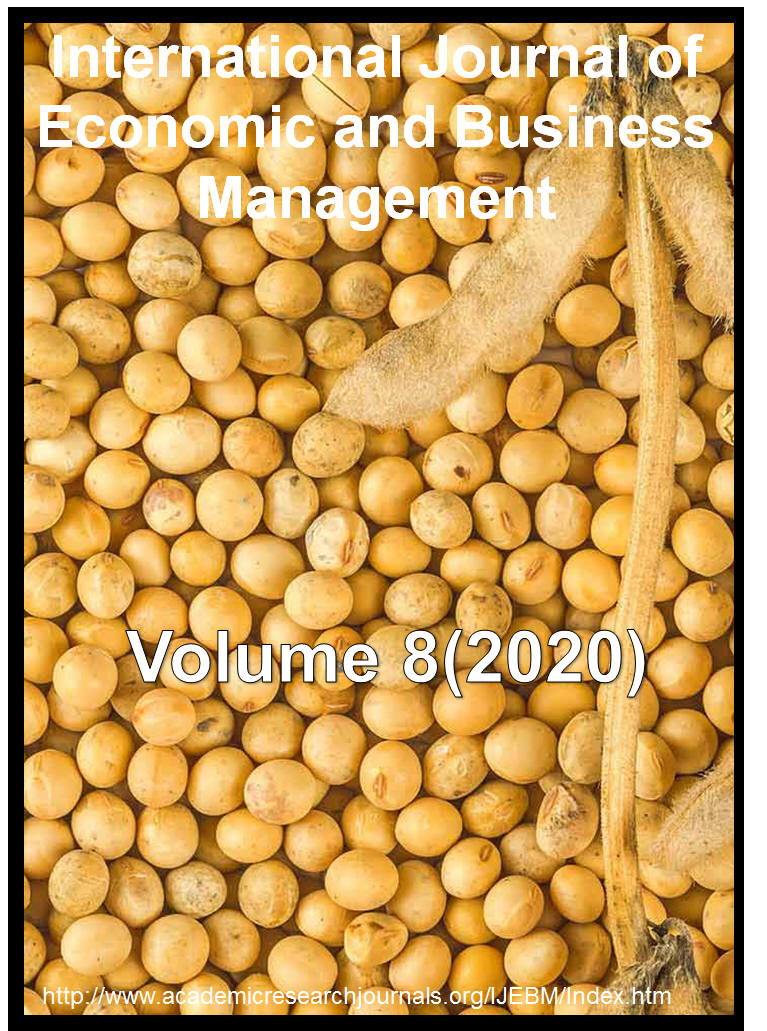|
ISSN: 2384-6151 |
International
Journal of Economic and Business Management |
|||||||||||||||||||
|
Vol. 8(2), pp. 11-17, February, 2020. ISSN: 2384-6151 DOI: 10.14662/IJEBM2020.025
Full Length Research
Analysis of the Economic Impact of Honey Bee Production among Rubber Farmers in Ogun State, Nigeria: A Strategy for Poverty Alleviation
Umar, H. Y.; Balagun, F. E.; Adindu, A.G and Idahosa, E.O.
Research Outreach Department, Rubber Research Institute of Nigeria, PMB 1049, Benin City, Edo State, Nigeria E-mail: haliru.umar@gmail.com
Accepted 21 February 2020
The study analysed the economic impact of honey bee production among some rubber farmers in Ogun State, Nigeria. Beekeeping otherwise called apiculture requires little for its investment, mainly construction of hives and protecting the hives from fire through fire tracing. The honey produced by the bees is very important for human use, both as food and medicinal purposes. This is in addition to the effective role the bees themselves play in crops pollination during their search for nectar. The study was a pilot study aimed to introduce and educate the rubber farmers on the modern method of apiculture in order to optimise their economic benefits from the rubber farming. Data were collected through the use of questionnaire from ten randomly selected rubber farmers in four villages from two Local Government Areas of the state. Farm location, number of beehives installed, honey produce (litters) per annum and the revenue generated from sales of the honey, age of respondents, educational level and household size were the data collected for the study. Both descriptive and inferential statistics were used to analyse the data. The results of the analysis revealed that a total of 899.83 litters of honey was produced and generated total revenue of 2,208,921.00 annually by the respondents. Gini-Cofficient model was used to evaluate the revenue distribution among the respondents and result indicated a high level of inequality distribution of the revenue (GC = 0.374). The R2 of the regression result was 0.992; implying 99.2% of the variation in the dependent variable (Revenue) was jointly explained by the independent (farm location, number of hives, honey yield, age of respondents, household size and educational level) variables used in the model. The coefficients for age (experience), level of education and quantity of honey produced were positive and significant at 1% level of probability; while household size and farm location had negative coefficients and not significant. Thus the business of apiculture in the study area was economical
Keywords: Honeybee, economic benefits, Gini-Cofficient, rubber farmers
Cite This Article As:
Umar, H. Y., Balagun, F. E., Adindu, A.G., Idahosa, E.O. (2020).
Analysis of the Economic Impact of Honey Bee Production among Rubber
Farmers in Ogun State, Nigeria: A Strategy for Poverty Alleviation.
Inter. J. Econ. Bus. Manage. 8(2): 11-17 |
||||||||||||||||||||
|
|
|||||||||||||||||||
